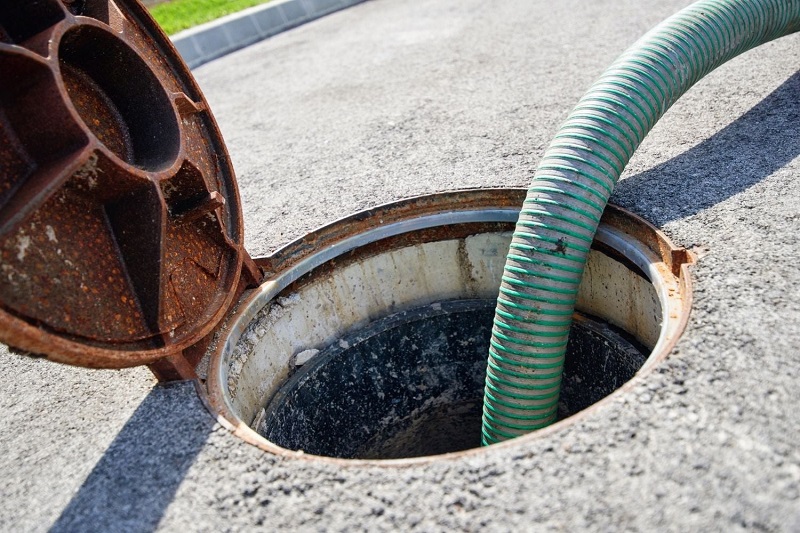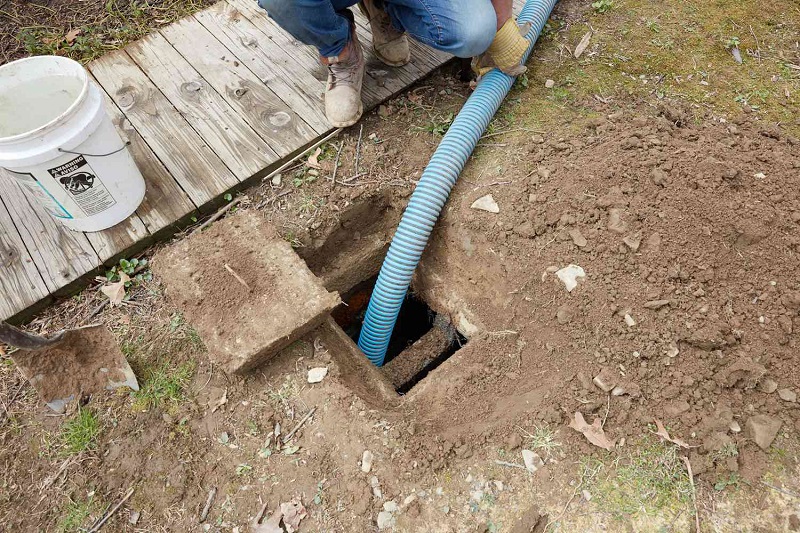Hey there, homeowner! If you’ve got a septic tank, you probably know it’s not the most glamorous part of your property, but it’s essential for keeping your plumbing system running smoothly. Neglecting your septic tank can lead to costly and messy problems down the road. So, let’s roll up our sleeves and dive into the world of septic tank cleaning. Don’t worry; it’s not as daunting as it sounds, and I’m here to guide you through it.
Why Clean Your Septic Tank?
Before we get into the nitty-gritty of cleaning, let’s talk about why you should clean your septic tank. Think of your septic tank as the digestive system of your home. It collects and breaks down all the wastewater from your sinks, toilets, and showers. Over time, solid waste and sludge can build up, potentially causing blockages, backups, and nasty odors. Regular cleaning prevents these issues and extends the life of your septic system.
Signs It’s Time to Clean Your Septic Tank
So, how do you know it’s time to give your septic tank some love? Look out for these signs:
- Slow Drains: If you notice your sinks, toilets, or showers draining slowly, it could be a sign of a full tank.
- Foul Odors: Unpleasant odors around your yard or inside your home might indicate a septic tank problem.
- Lush Grass: While a healthy lawn is great, an unusually green and lush patch above your septic tank could mean there’s a leak.
- Gurgling Sounds: Strange noises coming from your plumbing, like gurgling or bubbling, may suggest a septic issue.
- Backup or Overflow: The most obvious sign is sewage backing up into your home or pooling around your septic tank.
If you notice any of these signs, it’s time to roll up your sleeves and give your septic tank some attention.
The Tools You’ll Need
Cleaning your septic tank isn’t rocket science, but it does require some basic tools and safety gear:
- Protective Clothing: Start by protecting yourself with gloves, goggles, and old clothes you don’t mind getting dirty.
- Septic Pump Truck: You’ll need a septic pump truck or vacuum truck to remove the waste from your tank. If you don’t own one, you can hire a professional.
- Shovel: A sturdy shovel comes in handy for digging up the tank’s access point.
- Hose: A hose long enough to reach your tank from the pump truck.
- Safety Cones: These are essential if you’re working near a road to ensure safety.
Now that you’re geared up, let’s dive into the step-by-step process.
Step 1: Locate Your Septic Tank
The first step is finding your septic tank’s location. It’s usually buried underground, so you’ll need to do some digging. Here’s how to do it:
- Check Your Records: If you have blueprints or records of your property, they might indicate the tank’s location. Local building departments might also have this information.
- Look for Clues: Septic tanks are often located in areas with a slight depression or a patch of healthy grass. Sometimes, there’s a manhole cover or inspection pipe sticking out of the ground.
- Use a Metal Detector: A metal detector can help you locate any buried lids or access points.
Once you’ve found it, mark the spot for future reference.
Step 2: Uncover the Access Point
Now that you’ve located your septic tank, it’s time to access it. Most septic tanks have one or two access points:
- Manhole Cover: Some tanks have a large, round manhole cover that’s easy to remove.
- Inspection Pipe: Others have a smaller inspection pipe, which might require digging around it to access the tank.
Use your shovel to carefully uncover the access point, making sure not to damage it in the process.
Step 3: Prepare for Pumping
Before the septic pump truck arrives, you’ll want to do a few things to prepare:
- Clear the Area: Remove any obstacles, like rocks or vegetation, around the access point to make it easier for the pump truck to operate.
- Keep Pets Away: Make sure your pets are safely inside or away from the work area to prevent any accidents.
- Ensure Accessibility: Ensure the pump truck has enough space to park and maneuver close to the access point.
Step 4: Pump Out the Tank
This is where the heavy lifting comes in, and it’s best left to the professionals if you don’t have the equipment. Here’s how it’s done:
- Call a Professional: Contact a septic tank cleaning service with a septic pump truck. They’ll arrive with the necessary equipment and expertise.
- Connect the Hose: The technician will connect a large hose from the pump truck to the septic tank’s access point.
- Start Pumping: The pump truck will begin extracting the liquid and solid waste from your tank. The process can take anywhere from 30 minutes to an hour, depending on the tank’s size and level of waste.
- Inspect the Tank: While pumping, the technician may also inspect the tank for any signs of damage or issues that need addressing.
- Keep Safe Distance: During this process, maintain a safe distance from the tank and the pump truck. The technician will handle everything.
Step 5: Clean the Tank
Once the tank is emptied, it’s time to clean it to remove any remaining sludge and buildup. This step ensures your tank functions optimally:
- High-Pressure Water Jet: A high-pressure water jet or hose is used to clean the tank’s walls and remove any remaining solids.
- Inspect for Damage: Again, the technician will inspect the tank for cracks, leaks, or structural issues.
Step 6: Replace the Access Point
After the cleaning is complete, it’s time to secure the access point:
- Manhole Cover: If your tank has a manhole cover, ensure it’s properly sealed and securely in place.
- Inspection Pipe: If you have an inspection pipe, replace the cover and make sure it’s tightly sealed.
Step 7: Maintain Regularly
Cleaning your septic tank is a crucial part of its maintenance, but it’s not a one-time job. Regular maintenance helps prevent issues and prolongs the life of your septic system. Here’s what you can do:
- Schedule Routine Cleanings: Depending on your tank’s size and household usage, aim to clean your septic tank every 3 to 5 years.
- Watch What You Flush: Be mindful of what you flush down the toilet or pour down the drain. Avoid excessive use of harsh chemicals and non-biodegradable items.
- Conserve Water: Reduce water usage to prevent overloading your septic system. Fix leaks promptly and consider installing low-flow fixtures.
- Use Septic-Friendly Products: Use septic-safe cleaning products and toilet paper that breaks down easily.
- Landscaping: Be cautious about planting trees or shrubs near the septic tank, as their roots can damage the tank and pipes.
FAQs
- How often should I clean my septic tank?
- You should clean your septic tank every 3 to 5 years, but the frequency may vary depending on its size and household usage. If you notice any signs of trouble, don’t wait; get it cleaned sooner.
- Can I clean my septic tank myself?
- It’s not recommended to clean your septic tank yourself unless you have the necessary equipment and expertise. Cleaning septic tanks can be hazardous, and hiring a professional is the safer and more effective option.
- What happens if I don’t clean my septic tank?
- Neglecting septic tank maintenance can lead to clogs, backups, foul odors, and even septic system failure. The cost of repairing or replacing a failed septic system far exceeds the cost of regular cleanings.
- Are there any septic-safe cleaning products I should use?
- Yes, there are septic-safe cleaning products available that won’t harm your septic system. Look for labels that indicate they are septic-friendly. Additionally, using less harsh chemicals in your household cleaning routine can help.
- How can I prevent septic tank problems in the future?
- Regular maintenance is key to preventing septic tank problems. Schedule routine cleanings, watch what you flush, conserve water, and be mindful of landscaping near your septic tank to avoid root damage.








